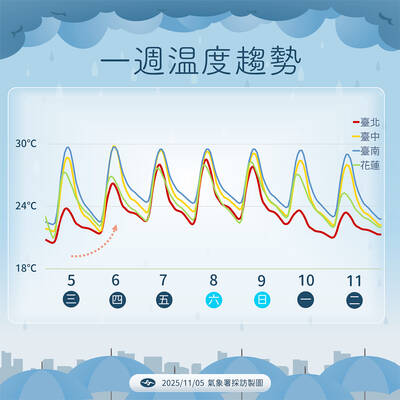By studying the possibility of re-evaluating Mongolia's status as part of ROC territory, the Ministry of the Interior (MOI) is taking further steps toward recognizing it as an independent state.
The move follows revised Mainland Affairs Council (MAC) regulations exempting Outer Mongolia's citizens from outdated diplomatic visa rules.
"For practical reasons, we are pushing the proposal to recognize Mongolia as an independent country, striking Mongolia from the territory listed as part of the ROC's former territory, which would not violate the Constitution," Minister of the Interior Yu Cheng-hsien (余政憲) told reporters yesterday evening.
"It is my understanding that most ministries support the idea," Yu said.
According to MOI officials, they started to study the possibility of changing Mongolia's designation after receiving maps published by civic groups which exclude Mongolia during the processes of reviewing and examining maps published in Taiwan.
Chang Yuan-hsu (
The confusion surrounding the issue is based on the fact that the treaty whereby Taipei recognized Mongolia was revoked in 1953. The MOI's proposal would simply return Mongolia to the independent status is enjoyed before the Sino-Soviet Friendship Treaty of August 1945 was abrogated in 1953.
In that treaty, the ROC had agreed to recognize Mongolian independence if the Mongolian people voted in favor of it in a referendum. A referendum was duly held in October 1945, with the electorate voting overwhelmingly for independence. The ROC, therefore, recognized Mongolia in January 1946. When the treaty was revoked in 1953, Mongolia ostensibly reverted to sovereign ROC territory.
Chang further cited an administrative document released by the MOI in 1947, which states, "Despite the fact that we recognized Mongolia as a independent country on Jan. 5 1946, the borders [between the two] still need to be confirmed."
But Chang emphasized that the issue of Mongolian recognition is a political one and would must be decided by higher-level officials.
Under the rules, maps must be reviewed and examined by the Map Examination Committee, which is staffed by Executive Yuan ministries, before they can be published.
The MOI plans to repeal the regulations to allow the organizations to publish maps without such review and examination.

Three Taiwanese airlines have prohibited passengers from packing Bluetooth earbuds and their charger cases in checked luggage. EVA Air and Uni Air said that Bluetooth earbuds and charger cases are categorized as portable electronic devices, which should be switched off if they are placed in checked luggage based on international aviation safety regulations. They must not be in standby or sleep mode. However, as charging would continue when earbuds are placed in the charger cases, which would contravene international aviation regulations, their cases must be carried as hand luggage, they said. Tigerair Taiwan said that earbud charger cases are equipped

Foreign travelers entering Taiwan on a short layover via Taiwan Taoyuan International Airport are receiving NT$600 gift vouchers from yesterday, the Tourism Administration said, adding that it hopes the incentive would boost tourism consumption at the airport. The program, which allows travelers holding non-Taiwan passports who enter the country during a layover of up to 24 hours to claim a voucher, aims to promote attractions at the airport, the agency said in a statement on Friday. To participate, travelers must sign up on the campaign Web site, the agency said. They can then present their passport and boarding pass for their connecting international

UNILATERAL MOVES: Officials have raised concerns that Beijing could try to exert economic control over Kinmen in a key development plan next year The Civil Aviation Administration (CAA) yesterday said that China has so far failed to provide any information about a new airport expected to open next year that is less than 10km from a Taiwanese airport, raising flight safety concerns. Xiamen Xiangan International Airport is only about 3km at its closest point from the islands in Kinmen County — the scene of on-off fighting during the Cold War — and construction work can be seen and heard clearly from the Taiwan side. In a written statement sent to Reuters, the CAA said that airports close to each other need detailed advanced

UNKNOWN TRAJECTORY: The storm could move in four possible directions, with the fourth option considered the most threatening to Taiwan, meteorologist Lin De-en said A soon-to-be-formed tropical storm east of the Philippines could begin affecting Taiwan on Wednesday next week, the Central Weather Administration (CWA) said yesterday. The storm, to be named Fung-wong (鳳凰), is forecast to approach Taiwan on Tuesday next week and could begin affecting the weather in Taiwan on Wednesday, CWA forecaster Huang En-hung (黃恩鴻) said, adding that its impact might be amplified by the combined effect with the northeast monsoon. As of 2pm yesterday, the system’s center was 2,800km southeast of Oluanbi (鵝鑾鼻). It was moving northwest at 18kph. Meteorologist Lin De-en (林得恩) on Facebook yesterday wrote that the would-be storm is surrounded by